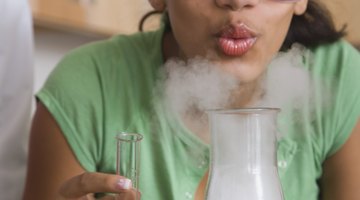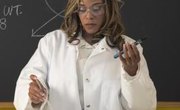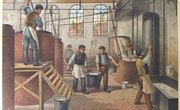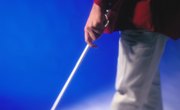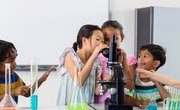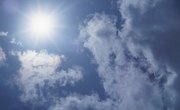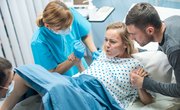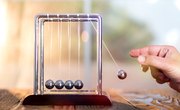Safety in the lab is a tremendous liability and health concern for all science teachers, who devote quite a bit of time to helping students see the importance of safety procedures. It is not uncommon for the first test in a lab class to be devoted to safety. The United Federation of Teachers has compiled a very long list of safety rules for science classes that many teachers post and review extensively. However, some broad category safety rules are applicable to nearly all school labs.
Protective Equipment
Students should wear protective eyewear, with or without side shields, when handling chemicals, glassware, substances under pressure or stress, projectiles, heating apparatuses or specimens that have been preserved. Wearing gloves and or a lab coat is also an essential safety practice. Protective clothing acts as a barrier to the skin in case of a spill. Check specific chemical labels or manuals to determine which type of gloves are appropriate -- particularly when you are working with corrosive materials such as hydrofluoric acid.
No Eating or Drinking
Rules prohibiting eating, chewing gum or drinking in the lab are strictly enforced in virtually all school-age laboratory experiences. Many chemicals in a variety of forms -- solid, liquid and gas -- can be harmful or fatal if ingested. Eating, chewing gum or drinking in the lab increases the likelihood of ingesting harmful substances. Accidentally drinking from the wrong container, eating substances by mistake or even ingesting residual amounts of harmful substances that remain on your fingers or gloves while eating can have serious consequences.
No Horseplay
Students from elementary through high school occasionally engage in horseplay. The lab is the wrong place for this behavior. The likelihood that a student might become injured increases when students are not completely focused on the lab activity. Playing with the fire extinguisher, jumping out to scare another student who might be holding a hazardous substance or playing with the heating apparatus or other lab equipment are examples of dangerous horseplay that should be banned in the lab.
Cleanup
Students should clean up after they have completed a lab assignment. They should replace all safety equipment so that it will be available to the next group. Adequately cleaning the station helps to guard against the potential for lab chemicals that should not mix from coming into contact with each other. All areas of spills should be thoroughly cleaned to prevent accidental contact with the skin.
Follow Broken Glass Protocol
Beakers, test tubes, petri dishes and other glass containers are vital components of a science lab. Breaking glass is the most common reason for accidents in the science lab. Students should follow the protocol for handling broken glass when accidents occur. Once breakage occurs, stop moving until the teacher assesses the situation and begins cleanup. The teacher will pick up the glass with a towel or gloves or sweep the glass fragments and discard.
Related Articles
References
Resources
Writer Bio
Katherine Bradley began writing in 2006. Her education and leadership articles have been published on Education.com, Montessori Leadership Online and the Georgia Educational Researcher. Bradley completed a Ph.D. in educational leadership from Mercer University in 2009.

